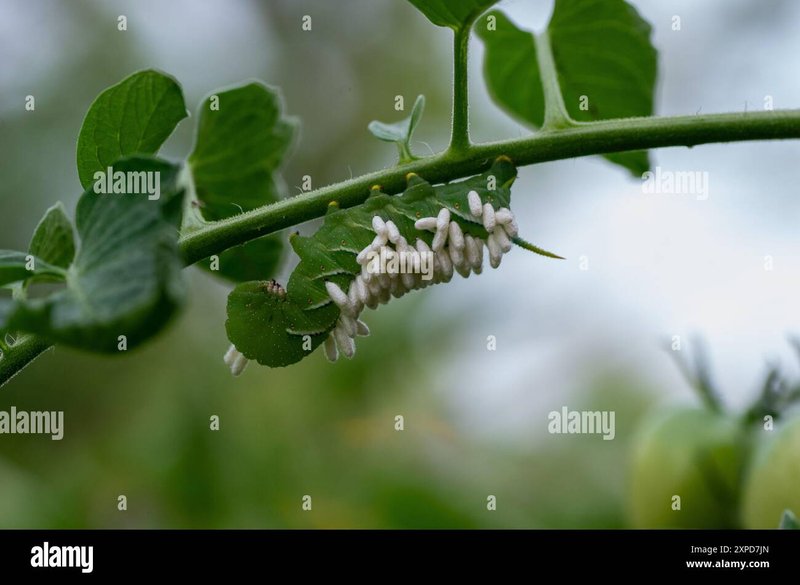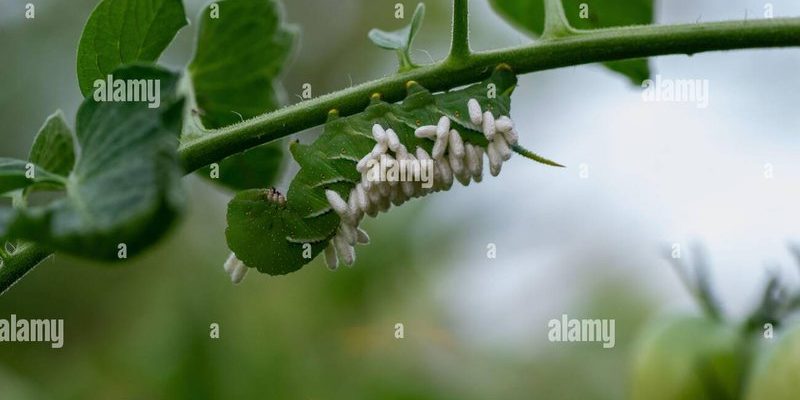
When talking about hornworms, we’re usually thinking about their role in nature, like how they turn into beautiful moths. But sometimes, they’re not just munching on your plants; they’re also hosting parasites that can change their behavior and health. Let’s dive into the signs of parasitism in hornworm larvae, exploring what you need to look out for and how it all works.
What Are Hornworms?
Hornworms are the larval stage of certain moths, most commonly the *Manduca sexta*, or the tobacco hornworm. These caterpillars can grow up to 4 inches long and are known for their distinctive horn-like projection on their rear end. While they primarily feed on tomato and tobacco plants, you might spot them munching on a variety of other plants as well.
*Here’s the thing:* hornworms are a significant part of the ecosystem, serving as food for birds and other animals. But when they become hosts to parasites, it significantly alters their behavior and life cycle. Instead of just focusing on their diet, we need to pay attention to their health too!
Common Parasites That Affect Hornworms
Several parasites can affect hornworm larvae, but the most common ones belong to the family *Braconidae*. These tiny wasps lay eggs inside the host caterpillar, and as those eggs hatch, they start to consume the hornworm from the inside out. It sounds like something out of a sci-fi movie, right?
You might also encounter *Nematodes*, microscopic roundworms that can infect hornworms and other caterpillars. They enter the host through the skin and start multiplying, ultimately leading to the caterpillar’s demise.
Visual Signs of Parasitism in Hornworm Larvae
When hornworms are infected by parasites, some distinct signs become visible. One of the first things you might notice is a significant change in their appearance and behavior.
- Unusual Behavior: An infected hornworm might stop feeding and become lethargic.
- Physical Changes: Look for swelling or abnormal lumps on their bodies, which can indicate the presence of wasp larvae inside.
- Death and Decay: Dead hornworms may show signs of decay much faster than healthy caterpillars, often turning a brownish color.
These signs can be alarming, especially if you’re trying to raise healthy plants. But let me explain how these changes impact not just the hornworm but the surrounding ecosystem as well.
Behavioral Changes in Infected Hornworms
In addition to visible signs, the **behavior** of hornworms changes when they are infected by parasites. Typically, a healthy hornworm will actively munch away at leaves, but an infected one may become sluggish and unresponsive.
Interestingly, some hornworms infected with parasitic wasps may even climb to a higher position on the plant before dying. This behavior increases the chances of their parasites surviving and finding new hosts. It’s like they’ve been programmed to help their tiny invaders!
You might be wondering why this matters. Understanding these behaviors not only helps gardeners manage their plants but also sheds light on the complex relationships within ecosystems.
Identifying Parasitized Hornworms
If you’re trying to pinpoint whether a hornworm is healthy or parasitized, here’s what you can do. First, observe their feeding habits. A hornworm that stops eating might be a sign of something wrong.
Next, closely inspect the caterpillar’s body for any *white, rice-like* structures. These are the cocoons of parasitic wasps that have emerged from the hornworm.
You can also check for color changes. A hornworm that is turning brown or shriveling up is likely in trouble. Remember, keeping an eye on your plants can help you notice these changes early, allowing you to take action before things get out of hand.
Implications for Gardeners
For gardeners, recognizing the signs of parasitism can be crucial. While it’s tempting to just eliminate a parasitized hornworm, it’s important to remember that these parasites are part of the natural cycle. They can help keep hornworm populations in check, reducing the need for chemical pesticides.
If you’re raising plants like tomatoes, and you see a hornworm infected with wasps, consider leaving it be. The wasps will eventually kill the hornworm, which can help protect your plants in the long run.
However, if the infestation is severe, you might want to take steps to control the hornworm population while still being mindful of the parasites. A balanced approach often yields the best results.
In the world of gardening, understanding the signs of parasitism in hornworm larvae helps us appreciate the delicate balance of nature. When hornworms become hosts to parasites, they’re playing a role in a much larger ecosystem. By recognizing the signs—be it unusual behavior, physical changes, or the presence of cocoons—you can make informed decisions for your plants.
So, the next time you spot a hornworm munching away, take a moment to consider what’s happening beneath the surface. Parasitism is a fascinating aspect of nature, reminding us that even in our gardens, life is filled with intricate relationships. Keep an eye on those hornworms, and let nature take its course—sometimes, it knows best!

